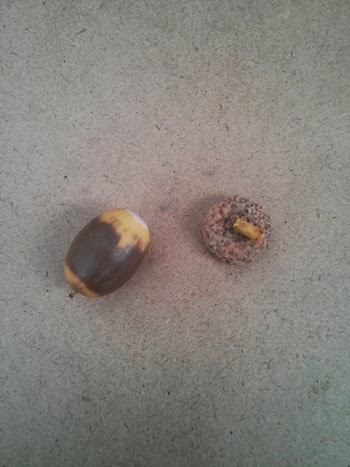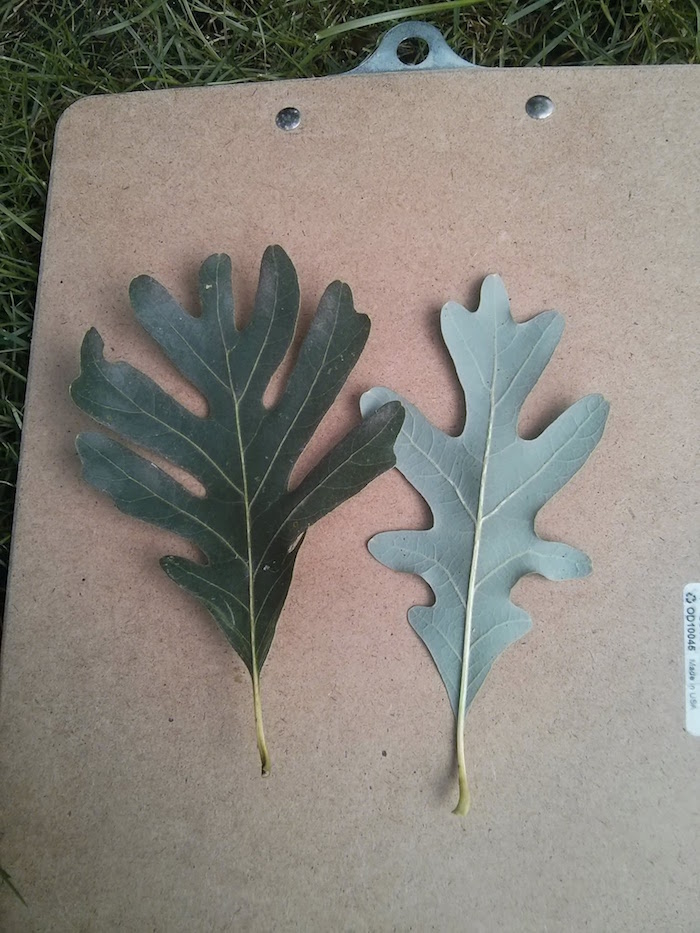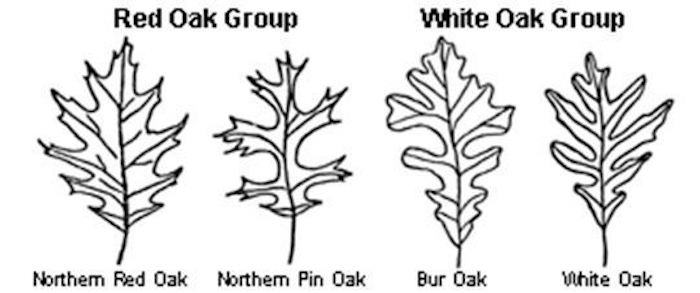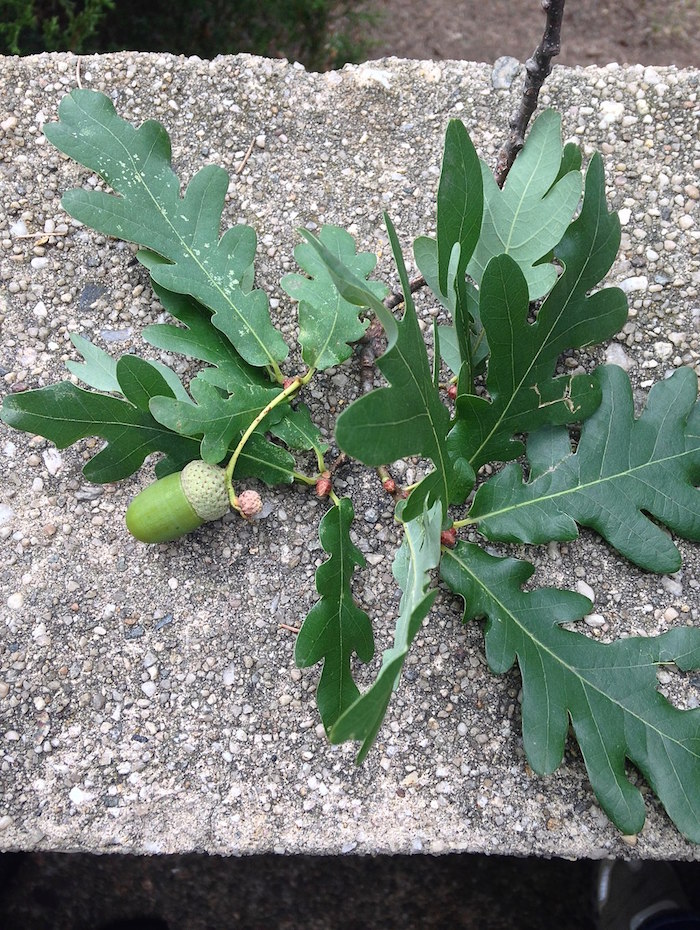
Description:
White oak is one of the six native oak species to Minnesota. Leaves simple, alternate, and 5-6 inches long. They are bright green above and whitish below, with 7-10 wide, rounded lobes and a wedge-shaped base. Male flowers are slender, yellow-green catkins, while female flowers are reddish and appear as small slender spikes. The flowers emerge with leaves. Female flowers develop into oblong acorns, often growing in pairs. The barks is whitish, varying from scaly to plated or ridged.
White oak is a popular timber species, but grows slowly and has been replaced by red oaks for many uses, save barrel making. The USS Constitution was built partially of white oak, and the species is the state tree of Illinois, Maryland, and Connecticut. It has also become a popular landscape oak because of its large size and attractive foliage. The fall color ranges from uninteresting browns to magnificent reds. The tree is so popular in Minnesota that there is even a township called White Oak Township.
White oak is part of the white oak group, or the section of the Quercus genus known as Sect. Leucobalanus. Trees in the white oak group tend to have rounded lobes, as in Q. alba.
Issues:
White oak is susceptible to oak wilt, as well as oak scale, oakworm and gypsy moth.
Other References:
Eloise Butler Wildflower Garden
Photo Credit: Public Domain CC by SA 3.0






